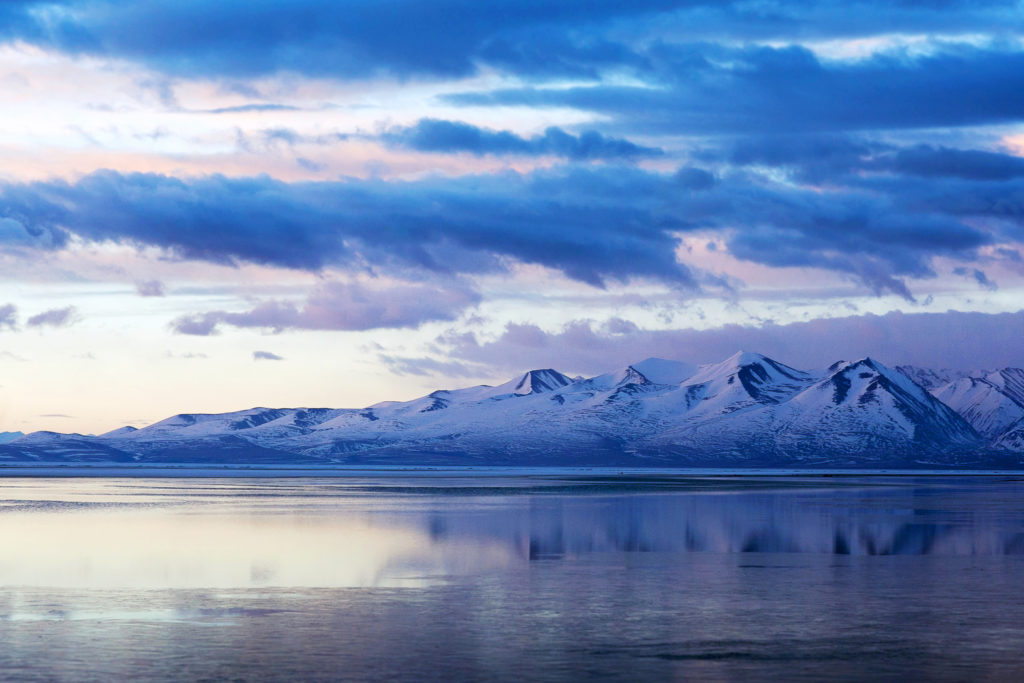
UPDATED for 2025: Knowing what you should and shouldn’t bring to Tibet is essential. This post provides a recommended packing list for Tibet.
Updated May 2025
If you have questions on what to pack for Tibet or need a recommendation for a quality travel agency in Tibet, send an email to info@thelandofsnows.com.
Some travelers like to take as little as possible when they go on a big journey. Others prefer to take as many comforts from home as possible. Most travel agency sites recommend packing the absolute minimum when going to Tibet, but I (with over 15 years of experience living full-time in Tibet) do not necessarily agree with that. Being at such a high altitude, Tibet can have varying weather throughout a journey. In addition, the temperatures can fluctuate considerably between places like Lhasa and Everest Base Camp and at Mt Kailash. In Lhasa during the summer, you could easily have warm temperatures between 23°C and 26°C (73°F and 79°F), but it could be well below freezing, 0°C/32°F at Everest Base Camp. For that reason, careful packing is needed for any journey to Tibet. This post will assist you with what to pack for Tibet.
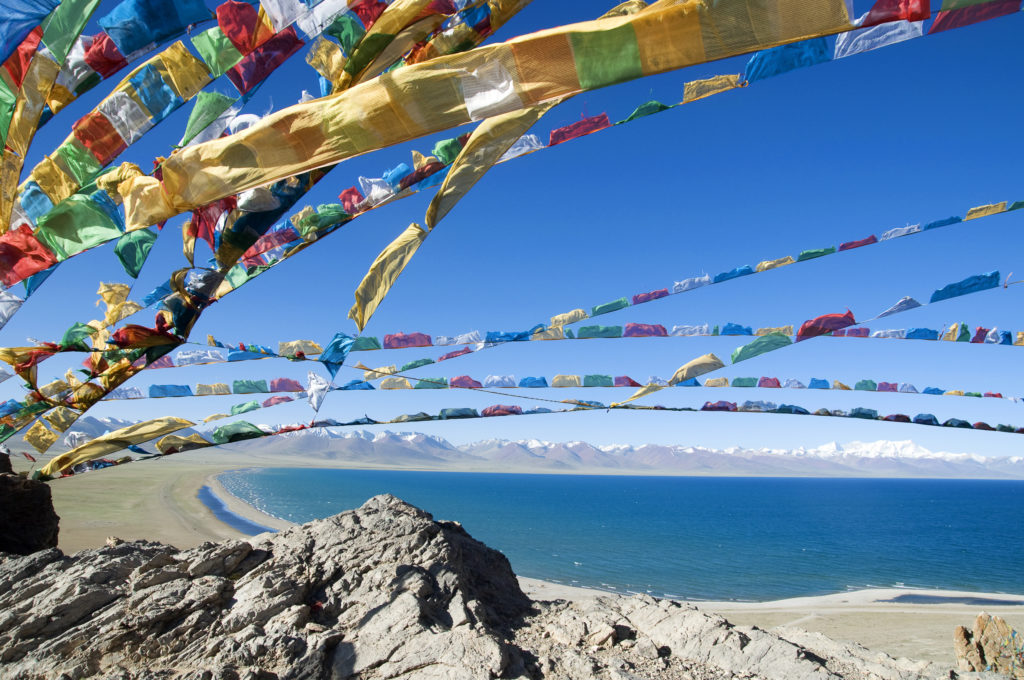
Nam Tso Lake in northern Tibet
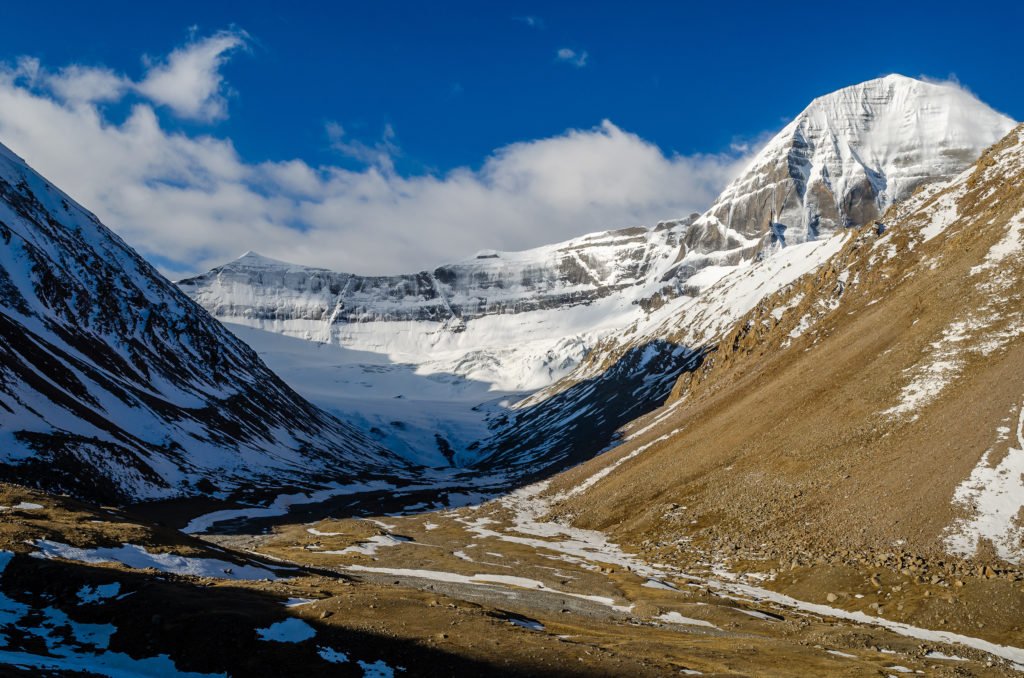
Packing the right items for a trek in Tibet, such as the route around Kailash, is essential.
Airline Baggage Allowance in Tibet
For all airlines flying to Lhasa from Mainland China, the checked baggage allowance is one bag weighing up to 20 kilograms/44 pounds. If you fly directly to Lhasa within 24 hours of arriving in Mainland China, you should be able to check one bag weighing up to 23 kilograms/50 pounds. In addition to the one checked bag, you can carry up to 2 carry-on bags. Official policy states that these carry-on bags should weigh no more than 5 kilograms/11 pounds; however, in my years living in Tibet, I have never had any problems with carry-ons weighing up to 12 kilograms/26 pounds. For my carry-ons, I usually have a camera/computer bag and a 30-liter backpack. Knowing how much baggage you can take will help you learn more about what to pack for Tibet.
What luggage to bring to Tibet
Unless you are specifically trekking in Tibet, a large backpack is unnecessary and not recommended. I suggest you bring a wheeled duffel, similar to what can be found here: REI wheeled duffel bags. In Tibet, all journeys, except treks, are overland trips using vehicles. Even for a trek around Kailash, I recommend bringing a suitcase or wheeled duffle bag for the journey, along with a smaller backpack you can use for the 3-day trek (you can lock up whatever things you don’t need at the Kailash trailhead in Darchen). There are guesthouses and simple restaurants along the way for the Kailash trek, so tents and sleeping mats are not needed (though you will need a sleeping bag).
For most of your journey in Tibet, your guide and driver, along with the staff of the hotels you are staying at, will carry your luggage for you from the vehicle to the hotel. You can use any luggage that you are comfortable with for a journey to Tibet. So again, unless you are trekking, there is absolutely no need to bring a large backpack to Tibet.
For overland journeys in Tibet, your luggage will be placed in the back of the vehicle and somewhat hard to access during the day. It is recommended that you bring a small 20-liter or 30-liter backpack to carry your camera, small toiletries, sunblock, water bottle, snacks, and other small items.
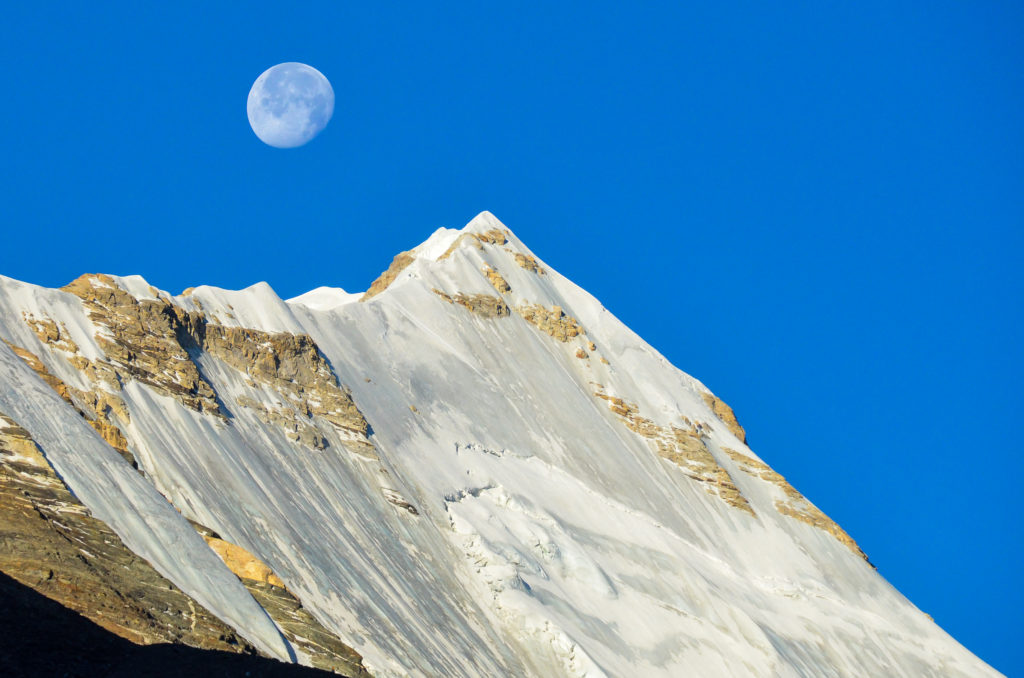
The moon above the Himalayas in Tibet
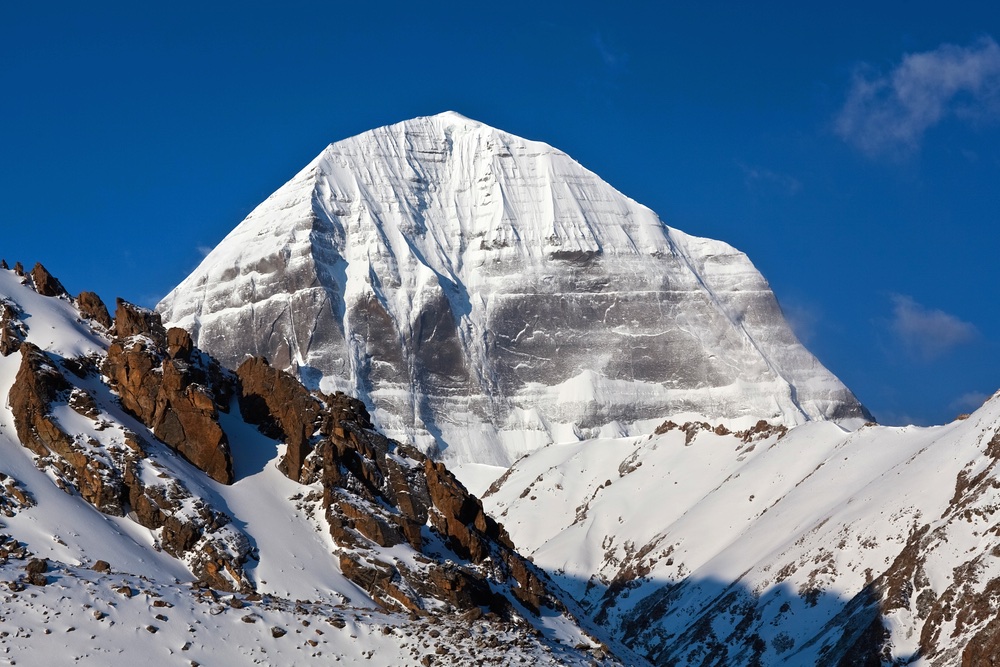
Mt Kailash in western Tibet
What backpack to bring to Tibet
Backpacks are only needed if you plan to trek in Tibet. If you plan to trek, bringing the right backpack is essential. Just to let you know, some trekkers use either porters or pack animals (mostly yaks) when trekking in Tibet, while others prefer the traditional way of carrying their things for the duration of the trek. The backpack size you will need will depend on the length of your trek. The most common treks in Tibet are the 3-day trek around Mt Kailash and the 5-day trek from Ganden Monastery to Samye Monastery.
In general, for treks lasting 3 to 5 nights, a 50 to 80-liter backpack is suggested. For a list of good backpacks of this size, go to the following link: Multi-day backpacks. If your trip lasts five or more nights, a 70-liter to 85-liter backpack is recommended. For a list of quality large backpacks, go to the following link: Extended trip backpacks. Still not sure which size and specific backpack you need? You can go to this site to find out what backpack to choose.
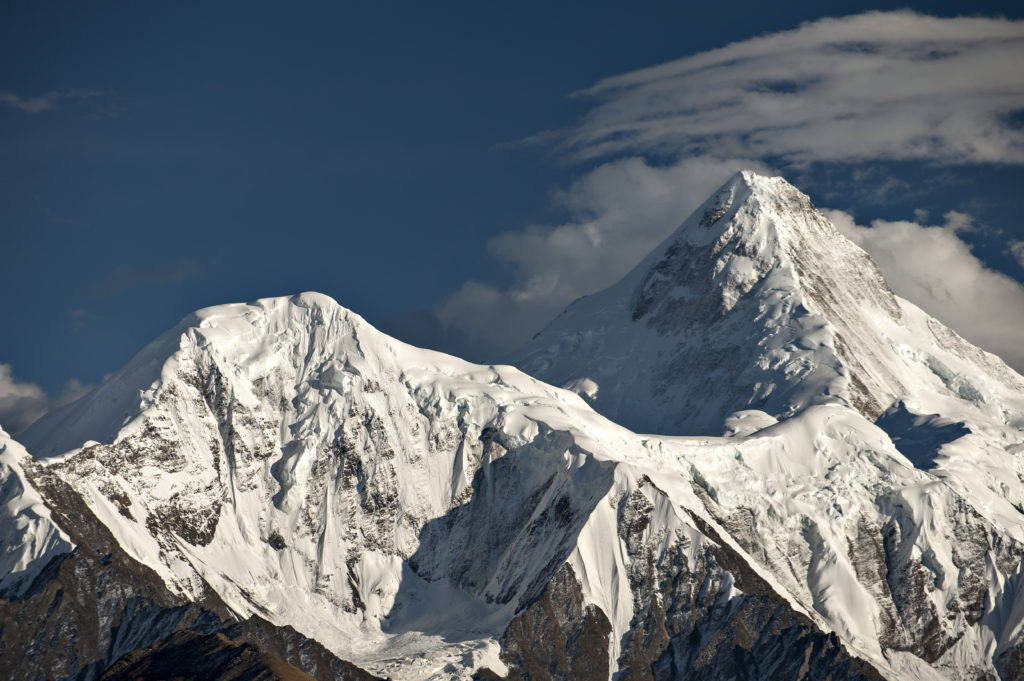
Minya Konka, the highest peak in eastern Tibet
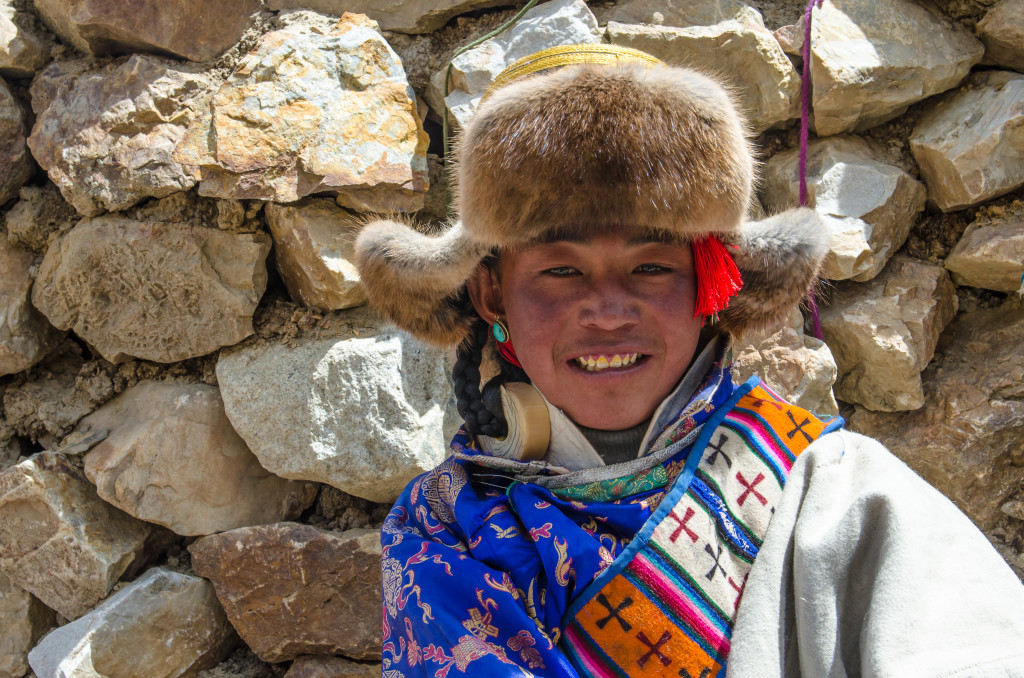
A young Tibetan man in the Everest region
Weather in Tibet
Tibet is known as a place covered in snow with freezing temperatures year-round. In reality, Tibet is quite pleasant for much of the year. During the winter months, many areas of Tibet can be pretty cold, but heavy snow is rare. The Himalaya Mountains generally allow very little precipitation from India and Nepal. Much of Tibet is a large, arid desert.
Monsoon Season
The wettest months of the year are from late June through mid-September. During these months, rain can fall, but usually not every day. Clouds in the summer months can obscure views of Everest and other Himalaya peaks. Kailash and Western Tibet usually remain relatively dry in the summer, though some rain is possible. When it does rain in Tibet, it is rare for it to rain for more than an hour or so before stopping. The remaining months of the year are generally dry and sunny. Snow can fall in higher elevations above 4000 meters/13,000 feet in winter, spring, and autumn, but it usually melts shortly after falling due to the intense UV rays from the sun at high elevation.
Unique Weather Situation in Tibet
The wind on high mountain passes can be mighty. Wear your coat, hat, and gloves when stopping at high passes, as the wind chill can be icy. High-quality sunglasses are essential. The sun in Tibet can be very intense and can quickly damage your eyes.
Tibet can have wide temperature swings throughout the day. Due to intense UV rays from high altitude and an arid climate, the weather will often feel much warmer than the actual air temperature in the sun, but cold in the shade. This type of weather makes it very important to bring clothing that allows you to wear layers that you can take off or add as the temperature changes. While wearing a heavy coat in the morning, you might be in just a fleece by the afternoon. By evening, the temperatures can be pretty cool again.
Here are the average temperatures to expect in the main areas of Tibet for each season:
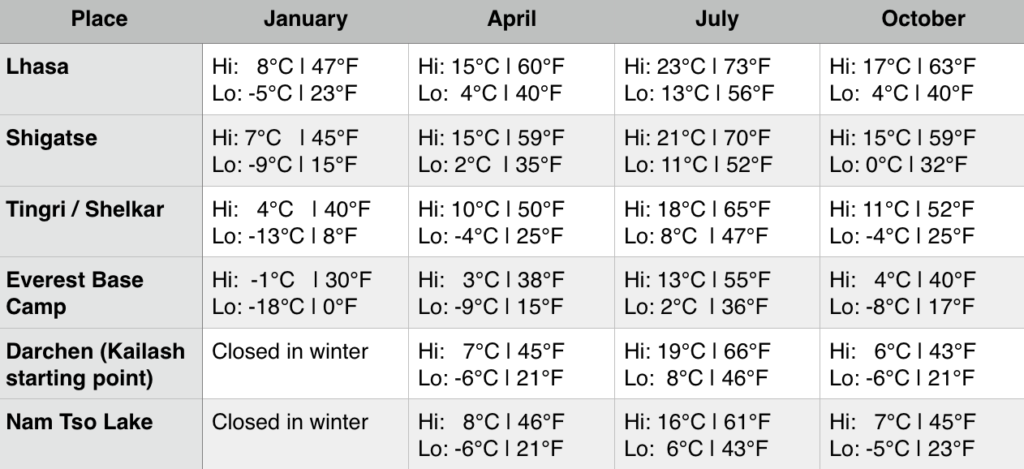
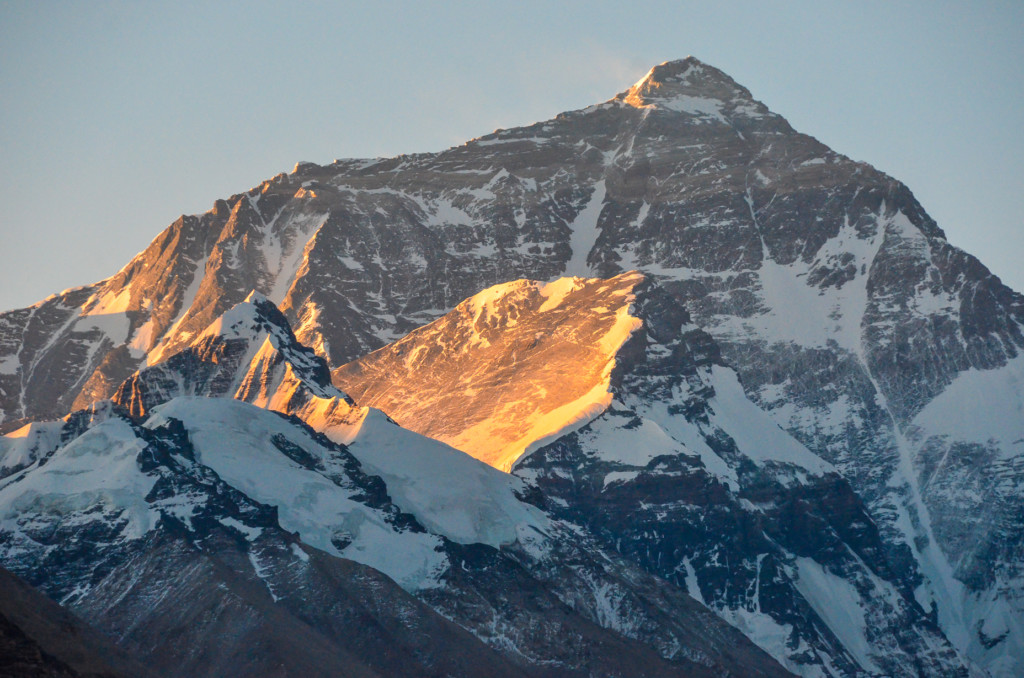
The North Face of Mt Everest viewed from Tibet.
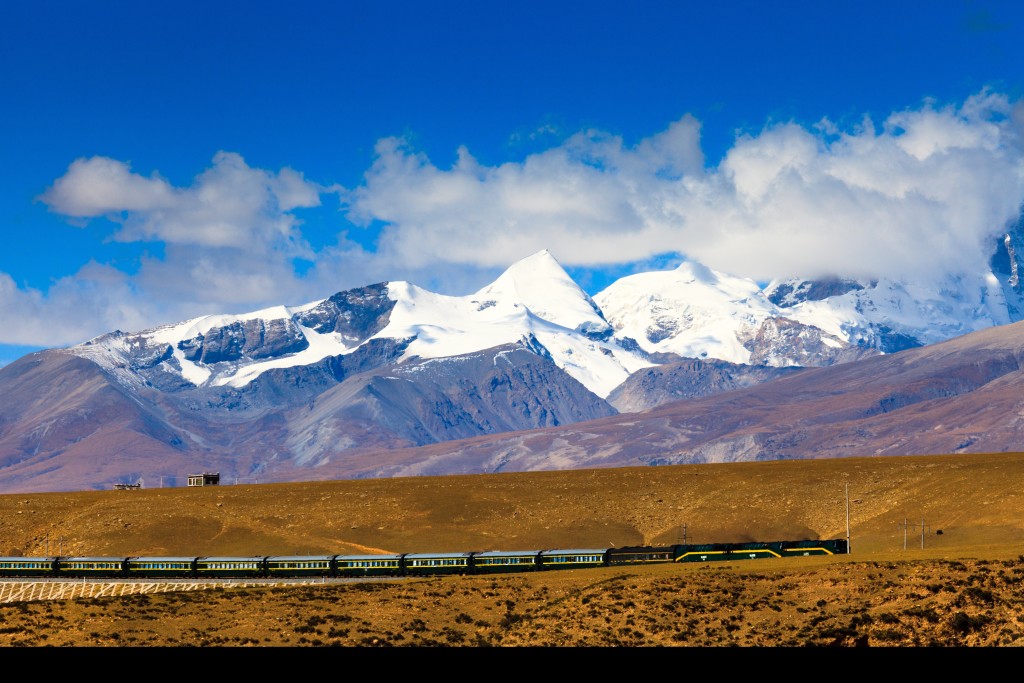
The train is going through Tibet.
What to pack for Tibet
Twenty-plus years ago, I didn’t care about high-quality clothing gear when I trekked, climbed, and camped in the mountains. After some unexpected clothing breakdowns years ago (mainly with zippers), I prefer only to use high-quality gear from trusted outdoor brands. Many excellent brands exist across the US, Canada, the UK, Australia, New Zealand, and Western Europe. Here is a list of clothing items that I recommend bringing:
Recommended clothing items for overland journeys (treks include this and the list below):
- comfortable, broken-in hiking shoes or walking shoes (hiking boots not required on overland journeys)
- 3 or 4 pairs of hiking pants (at least one pair of waterproof/windproof hiking pants)
- 2 or 3 pairs of cotton socks
- 3 or 4 pairs of wool socks
- 4 to 6 pairs of underwear
- 1 or 2 sets of thermal underwear (tops and bottoms)
- 1 set of warm pajamas for overnight
- mid-weight or heavy-weight winter coat (down recommended for travel in the months from Oct to Apr)
- lightweight hooded rain jacket for any travel done from April through October
- warm hat
- warm gloves
- scarf (optional)
- sun hat with a wide brim
- 2 or 3 fleece tops
- 4 or 5 T-shirts (Mixture of short and long-sleeved)
Recommended Accessories
- small flashlight (torch) or headlamp with extra batteries
- sunglasses with UV protection
- 1 liter Nalgene bottle
- small thermos for tea/hot water
- a day pack that is 20 L to 30 L in size to keep accessible in the vehicle
- 1 small bag for dirty clothes, etc
Personal Hygiene and Toiletry Items
- sun block/sun screen that is SPF 35 or higher
- Lip balm that contains sunscreen
- skin moisturizer (optional)
- antibacterial hand sanitizer
- small hand-held mirror (optional)
- deodorant
- feminine products
- shaving products
- travel-size soap and shampoo
- toothbrush and toothpaste
- wet wipes
- 2 rolls of toilet paper (toilet paper not provided in many public toilets)
- nail clippers
- Band-Aids and moleskine for blisters
- earplugs
- cotton buds/Q-tips
Recommended Medicines (contact your doctor for more info)
- medicine to treat traveler’s diarrhea
- Antibiotic ointment for minor cuts or blisters
- personal Tylenol, ibuprofen, cold medicine, antihistamine, etc
- Diamox / Acetazolamide (Optional….contact your doctor for details)
- medicine if you are prone to motion sickness
- prescription drugs (consult your doctor)
Extra Optional Items
- iPod/iPad/Kindle
- batteries for personal items (camera, flashlight, etc.)
- plenty of memory cards for your camera
- passport/money holder
- an extra copy of your passport and Chinese visa
- protein bars, chocolate, dried fruit, or other snacks of your choice
- electric outlet adapters for Tibet
- a small notebook with a pen
- 3 or 4 small zip-lock bags
- digital version of Lonely Planet Tibet guidebook
Additional Items for Trekking Journeys (only needed when trekking)
- 1 pair of comfortable tennis shoes, flip-flops, or croc-style sandals to wear after trekking
- broken-in hiking boots
- 2 or 3 wicking t-shirts
- 3 or 4 pairs of trekking underwear that minimize chaffing
- 1 lightweight, quick-drying towel
- gaiters (optional)
- bandana
- lightweight rain jacket with hood
- good quality sleeping bag rated for -12°C to -18°C (10°F to 0°F)
- 2 durable trekking poles
- lightweight hand-held mirror
- Moleskine and band-aids for blisters
- 70-liter (or bigger) backpack
- Camelbak water carrier
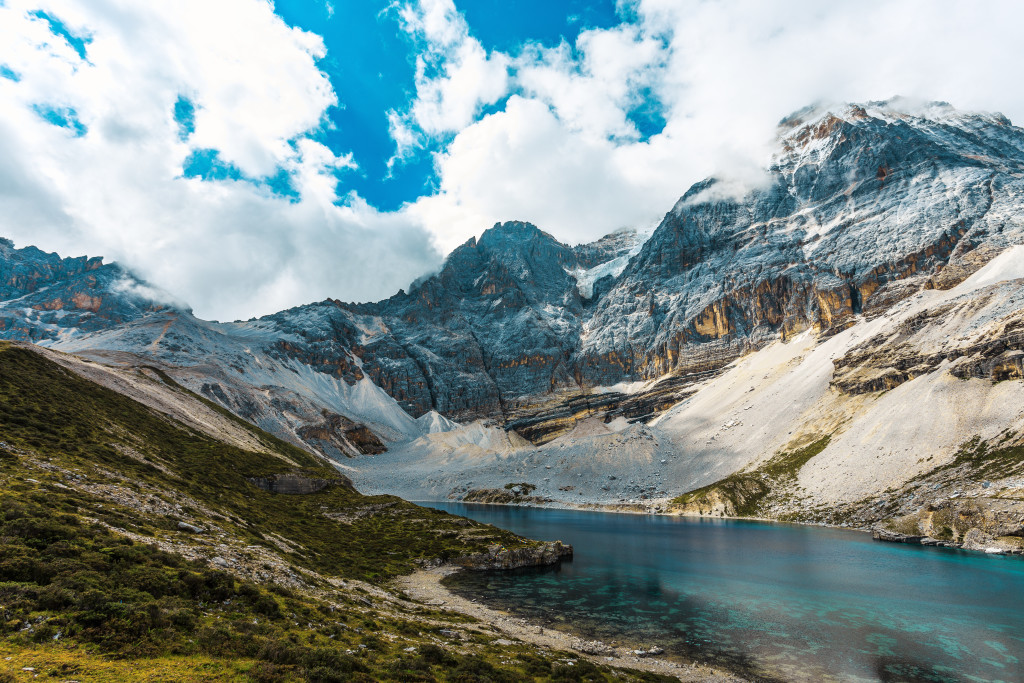
Trekking in eastern Tibet
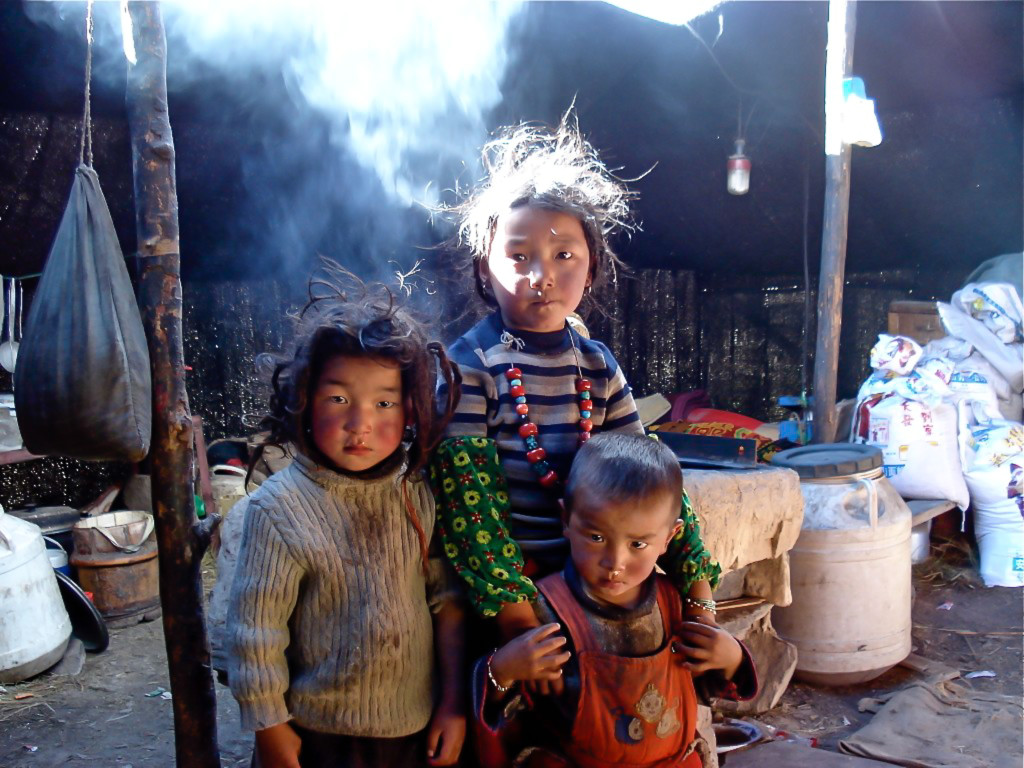
Nomad children in Tibet
Summary for Tibet Packing List
It is essential to pack practically for Tibet. If you are not trekking, big hiking boots, a large backpack, and a sleeping bag are unnecessary. The weather in Tibet can change throughout the day and vary across different areas of Tibet. Knowing what to pack for Tibet will help you be prepared, no matter the weather you encounter. If you have any questions about my recommended packing list for Tibet or what to pack for Tibet, please email me at info@thelandofsnows.com.
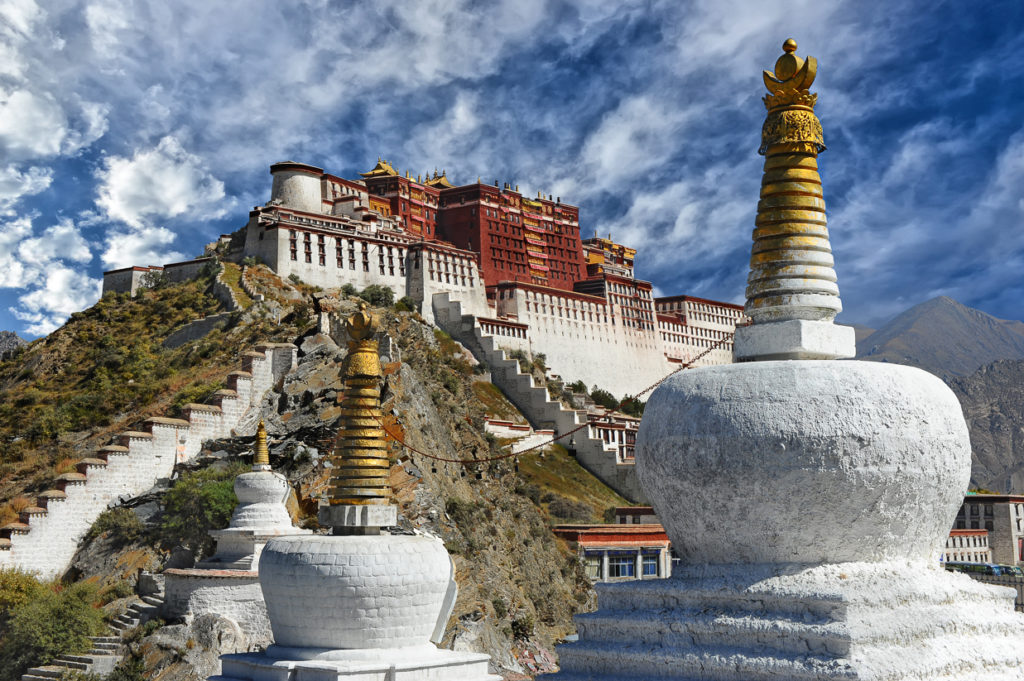
The Potala Palace in Lhasa
